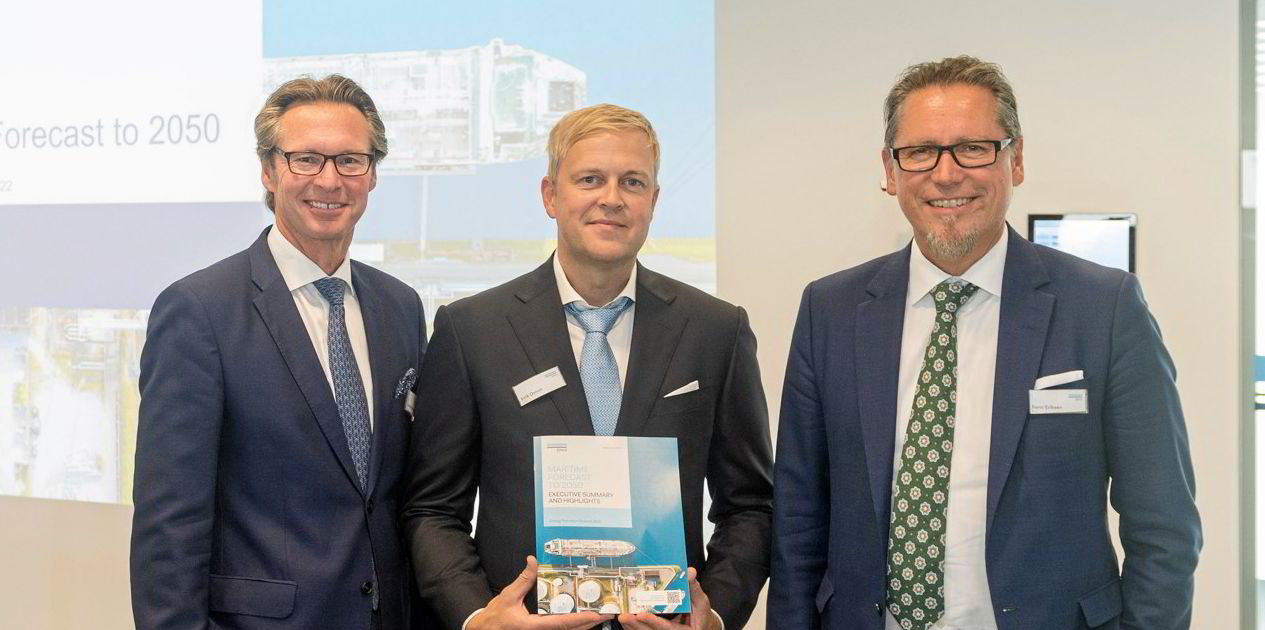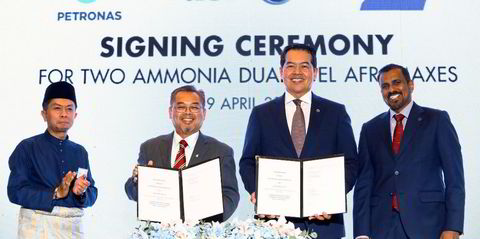Supporters of different lower carbon alternative fuels for shipping should put aside their rivalries and focus on the overall objective of decarbonisation, amid more evidence of the likely complexity of the future fuel market.
Knut Orbeck-Nilssen, CEO DNV Maritime, said the “blame culture” between backers of rival fuels was full of passion and emotion, but “we need to remove this talk and try to resolve the issue” collaboratively.
He was speaking at the launch of this year’s edition of DNVs Maritime Forecast to 2050 which highlighted the wide range of scenarios for the maritime fuel market over the next three decades due to uncertainties over technology, fuel availability and price.
“There is a bit of a blame culture going on. Some are pointing to shipping to solve this, but the LNG supporters are talking down methanol, and the methanol crowd are talking down ammonia and LNG,” Orbeck-Nilssen said at the start the SMM expo in Hamburg.
“There’s a lot of non-logical sentiment. There is a lot of passion, but emotion is usually not the best approach in business. If you want to make progress, then we will all need to work together.”
Lead author of the report, Eirik Ovrum, said all players in the market need to be open to the wide range of scenarios that may play out, and should approach the difficult questions of fuel choice and investment with that in mind.
He said the start of the International Maritime Organization’s operational carbon emission rules CII and EEXI in January 2023 will start to accelerate action. “We expect them to have a significant impact on ship design and operations,” he said.
While shipowners are naturally focused on the cost on onboard technology to use various fuels, Ovrum said the investment required on land to provide fuel will dwarf costs at sea.
Up to $2.5trn will be required to build new fuel sources and bunkering facilities globally from now to 2050, compared with under $800bn on ship technology.
DNV estimates land investment needs to be $30bn-90bn a year till 2050, with just $8bn-28bn needed on ships.
Already, 33% of ships on order by tonnage will be capable of using alternative fuels, the majority of those being able to burn LNG.
The race to bring new engines capable of using other low and no-carbon fuels to market should see most technologies required ready for commercial implementation in the next three to eight years, Ovrum said.
Orbeck-Nilssen said that while the ship technology was a challenge that is being met, the bigger challenge would be fuel availability.
The concept of ‘green corridors’ between major trading hubs launched at the COP26 meeting in Glasgow last year was a constructive move, but progress was slow. “The talk is accelerating,” he said.





